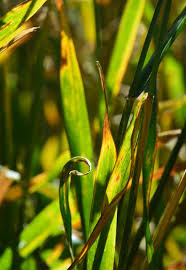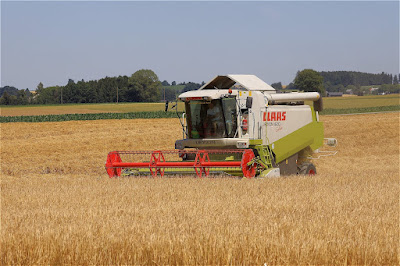INTRODUCTION
Botanical name :- Triticum aestivum
Family :- Gramineae
Chromosome number:- 2n=12
Origin:- western Asia
TAXONOMY
Kingdom:- plantae
Class:- angiosperm
Order:- poales
Family :- Gramineae
Genus:- Triticum
Species:- aestivum
FLORAL BIOLOGY
The male flower have three stamens.
Each flower consist of an ovary from which two styles
emerge, finished with two feathery sticky stigmas each.
Wheat flowers do not have sepals or petals.
DISTRIBUTION
Buch wheat is a minor food, has a short duration, a cash crop.
It is commonly grown in hilly and mountain region like:- Rukum,Rolpa, Jajarkot ,
Dolpa, Kavre, mustang, solukhumbu etc.
In India mostly grown in UP,PUNJAB,HARYANA,BIHAR,WEST BANGAL
etc.
CHINA,USA and INDIA
growing large amount of wheat.
IMPORTANCE
Wheat grain contain 12.2% protein, which is more than
cereals.
Wheat can be found in some from at almost every meal
like,breads,cookies,cakes,macroni etc. wheat contain 62-71% carbohydrates.
CLASSIFICATION OF WHEAT
There are several types of wheat.
· Triticum aestivum
· Triticum durum
· Triticum vulgare
· Triticum dicoccum
SOIL
Well drained, fertile
clay loam soil having moderate water holding capacity are ideal for irrigated
wheat.
Black soil are most
suitable for cultivation of wheat.
Soil ph:-
6.5-7.5
CLIMATE
Wheat crop is a temperate
crop but widely adopted to varying climate condition.
It needed cool, dry and
clear climate for better growth and yield.
The suitable temperature for
wheat cultivation is range between 15-30 degree Celsius.
Can germinate in the
temperature range of 3 – 35 degree Celsius.
VARIETIES
Nepal:- wheat research program in Nepal
has released 9 wheat varieties resistant to Ug99 namely :-VIJAYA,TILOTTAMA,BANGANGA,GAURA,DAULAGIRI,DANPHE,SWORGADWARI,MUNGAL
AND CHYAKHURA.
Indian varieties :-
· KANCHANA ( BAW28)
· BARKAT ( BAS39)
· SONALIKA
· NURI 70
· LNIA 66
TIME OF SOWING:- October to November.
SOWING METHOD:- Broadcasting, behind local plough,
drilling, dibbling, zero tillage technique.
SPACING:- 15-23 cm row spacing.
SEED TREATMENT:- Hot water, Vitavax - only for
livestock treatment.
Treated with fungicide
like captan or thiram@ 3gm per kg of seed for controlling soil borne disease.
SEED RATE:- Local varieties :- 125kg per
hectare.
Rainfed varieties:-
100kg per hectare.
FYM:- 2 to 3 tons farmyard
manure per hectare or some other organic matter is applied 5 or 6 weeks before
sowing.
NPK:- 100:20:60 kg per hectare.
WEED MANAGEMENT
Common weeds are
Chenopodium album, Cyperus rotundus etc.
One hand weeding is done
after 3 to 4 weeks of sowing.
The only way to control
weeds affectively is to use selective herbicide like pendimethalin@0.5 kg per hectare in 600l of
water as pre-emergence.
Use 2-4,D.
COMMON DISEASE
· Powdery mildew
· Loose smut
· Brown rust
· Karnal bunt
DISEASE MANAGEMENT
· Grow resistant varieties.
· Use of healthy seed for sowing.
· Seed treatment Vitavax@2.5gm per kg seed.
· Hot water treatment.
· Disease resistance varieties
DRW59,PWB,HD2203, etc.
· Spraying of Mancozeb@0.2%.
WATER MANAGEMENT
The crop requires 4-6
irrigations depending on the soil type and rainfall.
Water stagnation should
be avoided at the time of germination.
CRITICAL STAGE
· CRI stage
· Tillering stage
· Flowering stage
· Heading stage\ Milking stage
HARVESTING
The crop is harvested
when the grains become hard and the straw becomes dry and brittle.
The harvesting is mostly
done by sickle.
Threshing is done by
trampling under bullocks feeds stone roller or by thresher.
YIELD
Rainfed crop:- 1500-2000
kg per hectare.
Irrigated crop:-
3500-4000 kg per hectare.






